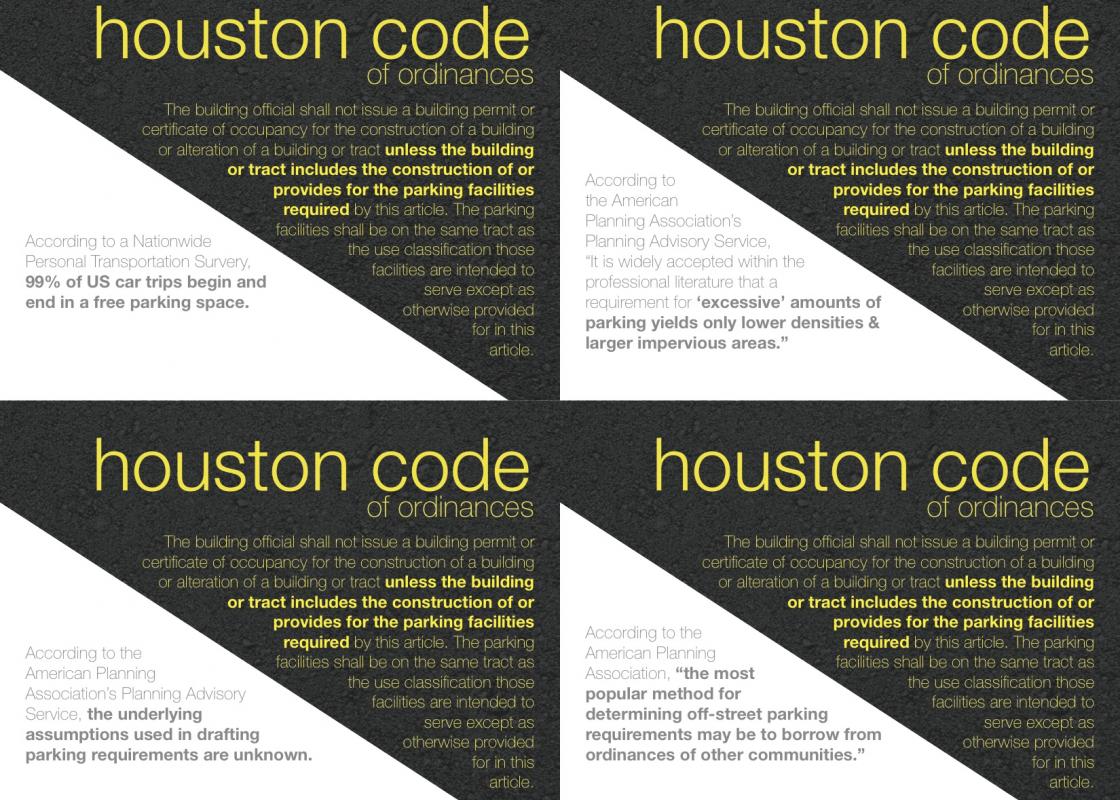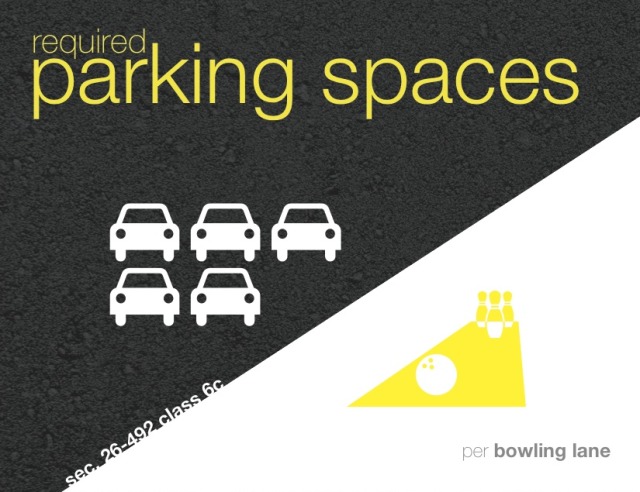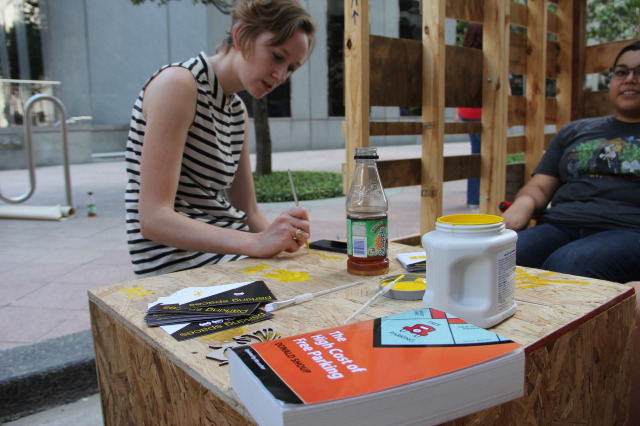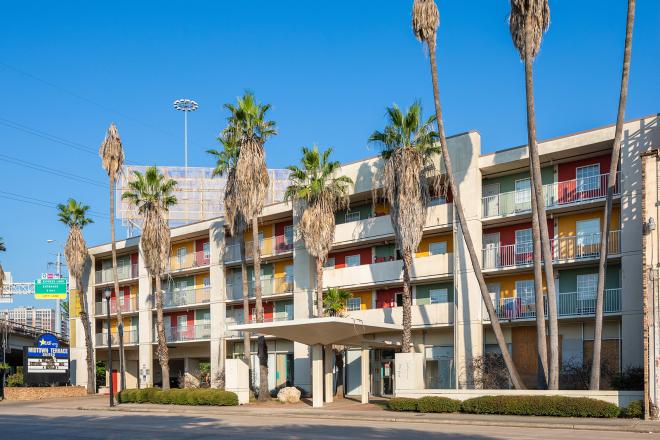Parking Day, in Houston and all over the world, just happened last Friday. Organized in San Francisco in 2005 by design firm Rebar and embraced by landscape architects, designers, architects, and others worldwide, the event draws attention to the overwhelming amount of concrete dedicated to parking, and what might otherwise go there. On Parking Day 2011, there were 975 parks built in 162 cities across 35 countries and on 6 continents, and the event keeps growing.
This year in Downtown Houston, 13 groups gathered along the corner of Texas and Capitol, paid the meters for the day, and built a little bit of paradise. On site, each on their own parking spots, were a cooling foot bath, a tiny house, an open-air game room, a grove of papaya trees at their infancy, and a Richard Serra-like construction meant to draw attention to the sky. What had been previously isolated parking spot conversions turned into a parking party. The event also happened to coincide with the kick-off to Houston's Design Week.
Besides being a tremendous lot of fun, Parking Day also brings into question Houston's parking ordinances. Architect Leigh Goris, part of Allyn West's Tiny House Group, designed and published a series of postcards illustrating the number of parking spots required per establishment in Houston. (West is an employee of the Rice Design Alliance, the publisher of this blog.)
For example, bowling lanes must provide five parking spots per bowling lane --- even though most bowling games are of four people or fewer. The mandatory parking spaces create a sea of concrete in a city where density, and real estate prices, are climbing with abandon.
Parking ordinances help define not only land usage, but also urban aesthetics as well as how city dwellers go about getting from place to place. With upwards of 800 million parking spaces in the United States, or more than 2 million acres, we've paved the equivalent of Rhode Island and Delaware in parking alone.
In The High Cost of Free Parking, the UCLA-based urban planner Donald Shoup advocates for a close examination of the price for curb parking, including performance pricing, for parking revenue to pay for local public services and a removal of minimum parking requirements. His 750-page, small-print treatise on the subject, complete with in-depth case studies, is a bible for many urban planners.
This summer, The Kinder Institute presented preliminary findings about parking in their study of Rice Village, concluding that while patrons have a difficult time finding parking, there is ample available space. The Rice Village report is the first from the Kinder Institute’s Vital Communities initiative, part of the Urban Development, Transportation, and Placemaking Program, designed to help bring meaningful improvement to urban neighborhoods through planning, design, management, and infrastructure. The full report is expected this fall, and could have larger applications beyond Rice Village (like Houston's General Plan?).
As Houston moves toward greater and greater density, cars, traffic, and parking could become the obstacles that prevent the city from flourishing—unless we are able to manage them. With driverless cars on the horizon, the era of the personal automobile is passing. Public space is more important than ever. Could we ever, to reverse Joni Mitchell's lyrics, tear down parking lots and put up a paradise?













